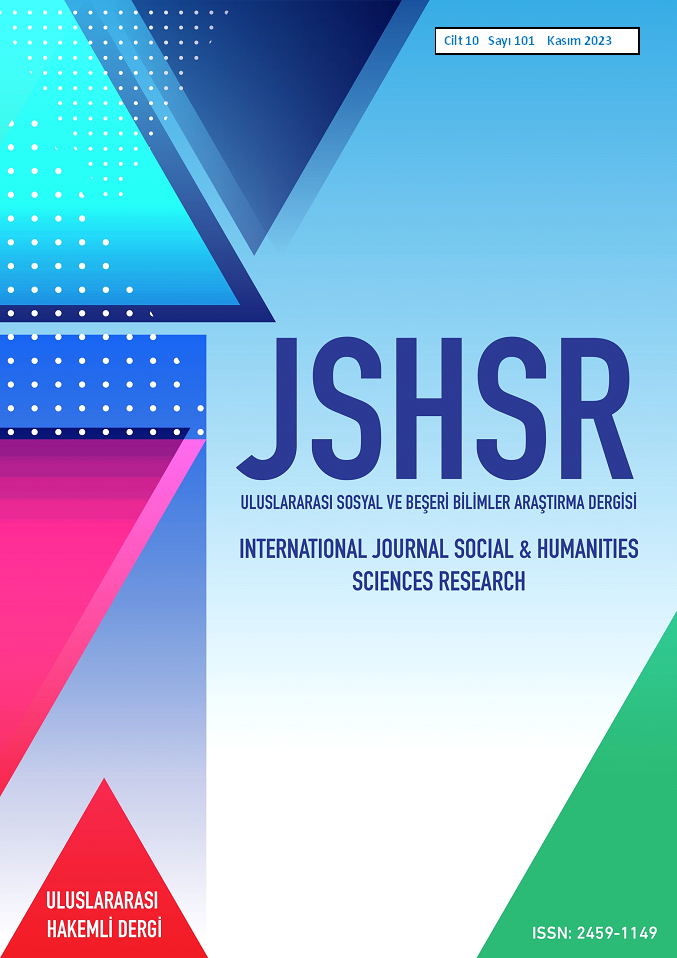Havacılıkta Pozitif Emniyet Kültürü: İş Stresini Etkiler Mi?
DOI:
https://doi.org/10.5281/zenodo.10255860Anahtar Kelimeler:
Havacılık, Havayolu, İş Stresi, Emniyet, Pozitif Emniyet KültürüÖzet
Bu çalışmanın amacı; uçuş emniyetinin ön planda tutulduğu havacılık sektöründe çalışanların pozitif emniyet kültürüne ilişkin algılarının yaşadıkları iş stresi üzerindeki etkilerini ortaya koymak ve demografik değişkenler özelinde nasıl değiştiğini incelemektedir. Araştırma kapsamında; Türkiye'de faaliyet gösteren havalimanı işletmeleri, havayolu şirketleri ve yer hizmetleri kuruluşlarında görev yapan 363 çalışandan çevrimiçi anket yöntemiyle veri toplanmıştır. Çalışanların demografik değişkenleri ile pozitif emniyet kültürüne ilişkin algıları ve iş stresi arasındaki ilişkiyi incelemek için Bağımsız T testi, ANOVA testi, Korelasyon ve Regresyon analizleri yapılmıştır. Yapılan değerlendirmeler neticesinde; havacılık çalışanlarının pozitif emniyet kültürüne ilişkin algılarının iş stresini doğrudan etkilemediği ancak demografik değişkenler özelinde pozitif emniyet kültürünün iş stresini azalttığına yönelik bulgulara ulaşılmıştır. Çalışmanın, havacılık işletmelerinde pozitif emniyet kültürünün yaygınlaşması ve iş stresinin yönetilmesi hususunda alan yazına katkı sunması beklenmektedir.
Referanslar
Aaker, D.A., Kumar,V. ve Day, G.S., (2007). Marketing Research, (9. Edition). John Wiley & Sons. Danvers.
Ayyıldız, F. ve Çam, D. (2020). The Moderator Role of Safety Climate in the Relationship between Job Stress and Safety Performance: An Investigation in the Health Sector. Studies in Psychology, 40(2), 451-475.
Bayarçelik, E. B., Vatansever Durmaz, B. ve Gürler, N. (2019). İş Stresi ve Pozitif Psikolojik Sermayenin Tükenmişlik Üzerine Etkisi: Bankacılık Sektöründe Bir Araştırma. İnsan & İnsan, 6(21), 493-523.
Brown, G. W. ve Harris, T. (1978). Social Origins Of Depression: A Reply. Psychological Medicine, 8(4), 577-588.
Bükeç, C. M. ve Gerede, E. (2017). Türkiye’deki Hava Aracı Bakım Kuruluşlarındaki Disiplin Sistemlerinin Mevcut Özelliklerinin ve Olumlu Adalet Kültürüne Muhtemel Yansımalarının Araştırılması. İşletme Araştırmaları Dergisi, 9(4), 155-195.
CAA (2006). Airside Safety Management. UK Commission 1. CAP 642. Civil Aviation Authority. London. U.K.
Chauvin, B., Rohmer, O., Spitzenstter, D., Raffin , D., Schimchowitsch, S. ve Louvet, E. (2014). Assessment of JobStress Factors in a Context of Organizational Change. Revue Europpeenne de Psychologie Appliquee, 64, 299-306.
Clarke, S. G. (2000). Safety Culture: Under-Specified and Overrated? International Journal of Management Reviews, 2(1), 65-90.
Cohen, S., ve Williamson, G. (1988). Perceived Stress in a Probability Sample of the United States. In S. Spacapan, & S. Oskamp (Eds.), The Social Psychology of Health: Claremont Symposium on Applied Social Psychology içinde (s. 31-67). Sage Publications.
Doğru, K. (2017). Çalışanların Stres Yönetiminin İş Güvenliği ve İş Sağlığı Açısından Araştırılması. Yüksek Lisans Tezi. Fen Bilimleri Enstitüsü. İzmir Katip Çelebi Üniversitesi.
Erkmen, T. ve Karaaslan, E. (2021). Covid-19'un Uçuş Emniyet Kültürü Algılarına Etkisi: Kabin Ekipleri Üzerine Bir Araştırma. Bahçeşehir Üniversitesi İktisadi ve İdari Bilimler Fakültesi Dergisi, 40(1), 95-119.
Goh, J., Pfeffer, J. ve Stefanos, A. Z. (2016). The Relationship Between Workplace Stressors and Mortality and Health Costs in the United States. Management Science, 62(2), 608-628.
Graham, H. (1999). Stresi Kendi Yararınıza Kullanın. (Çev. Murat Sağlam ve Türkan Tezcan). Alfa Yayınları.
Gül, A. (2015). Pozitif Örgütsel Davranışın İş Stresi Üzerine Etkisinde İş Güvenliğinin Aracılık Rolü: Bir Üniversite Hastanesi Örneği. Doktora Tezi. Sosyal Bilimler Enstitüsü. Süleyman Demirel Üniversitesi.
Gümüştekin, G. ve Öztemiz, B. (2005). Örgütlerde Stresin Verimlilik ve Performansla Etkileşimi. Çukurova Üniversitesi Sosyal Bilimler Enstitüsü Dergisi, 14(1), 271-288.
Gürsel, S., Rodoplu, H. ve Orhan, G. (2020). Havacılıkta Emniyet Kültürü Geliştirme. Social Sciences Studies Journal, 6(69), 3935-3944.
Hart, P.M. ve Cooper, C. (2001) Occupational Stress: Toward a More Integrated Framework. In: Anderson, N., Ones, D.S., Sinangil, H.K. and Viswesvaran, C., (Eds.), Handbook of Industrial, Work & Organizational Psychology içinde (s. 93-144). Sage Publications.
ILO. (1986). Psychosocial factors at work: Recognition and control. Occupational Safety and Health Series. Geneva: International Labour Office (ILO) and joint WHO Committee on Occupational Health.
Karabey, C. N. (2019). Bilgi Kaynakları ve İkinci Elden Veriler, Modelleme ve Hipotez, Örnekleme. S. Ünal (Edt.), Sosyal Bilimlerde Araştırma Yöntemleri içinde (s. 91-131). Atatürk Üniversitesi Açıköğretim Fakültesi Yayınları.
Malhotra, N. K. (2004). Marketing Research an Applied Orientation, (4. Edition.) Pearson Prentice Hall.
Park, J. (2007). Work Stress and Job Performances. Perspectives on Labour and Income, 8(12), 5-17.
Tabachnick, B. G. ve Fidell, L. S. (2015). Çok Değişkenli İstatistiklerin Kullanımı, (6. Baskı). (Çev. Mustafa Baloğlu), Nobel Akademik Yayıncılık.
Üstün, P. (2018). Örnekleme Yöntemleri. https://www.Phdernegi.Org/Wp-Content/Uploads/2016/03/ %C3%B6rnekleme_Yontemleri.Pdf
Yılmaz, N. H. (2019). Havacılıkta Emniyet Yönetim Sistemi ve Emniyet Kültürü, Havacılık Çalışanlarında Emniyet Kültürü Ölçümü. Yüksek Lisans Tezi. Sosyal Bilimler Enstitüsü. Kocaeli Üniversitesi.
Zikmund, W. G. (1997). Business Research Methods, (5. Edition). The Dryden Press.
İndir
Yayınlanmış
Nasıl Atıf Yapılır
Sayı
Bölüm
Lisans
Telif Hakkı (c) 2023 International Journal of Social and Humanities Sciences Research (JSHSR)

Bu çalışma Creative Commons Attribution 4.0 International License ile lisanslanmıştır.


